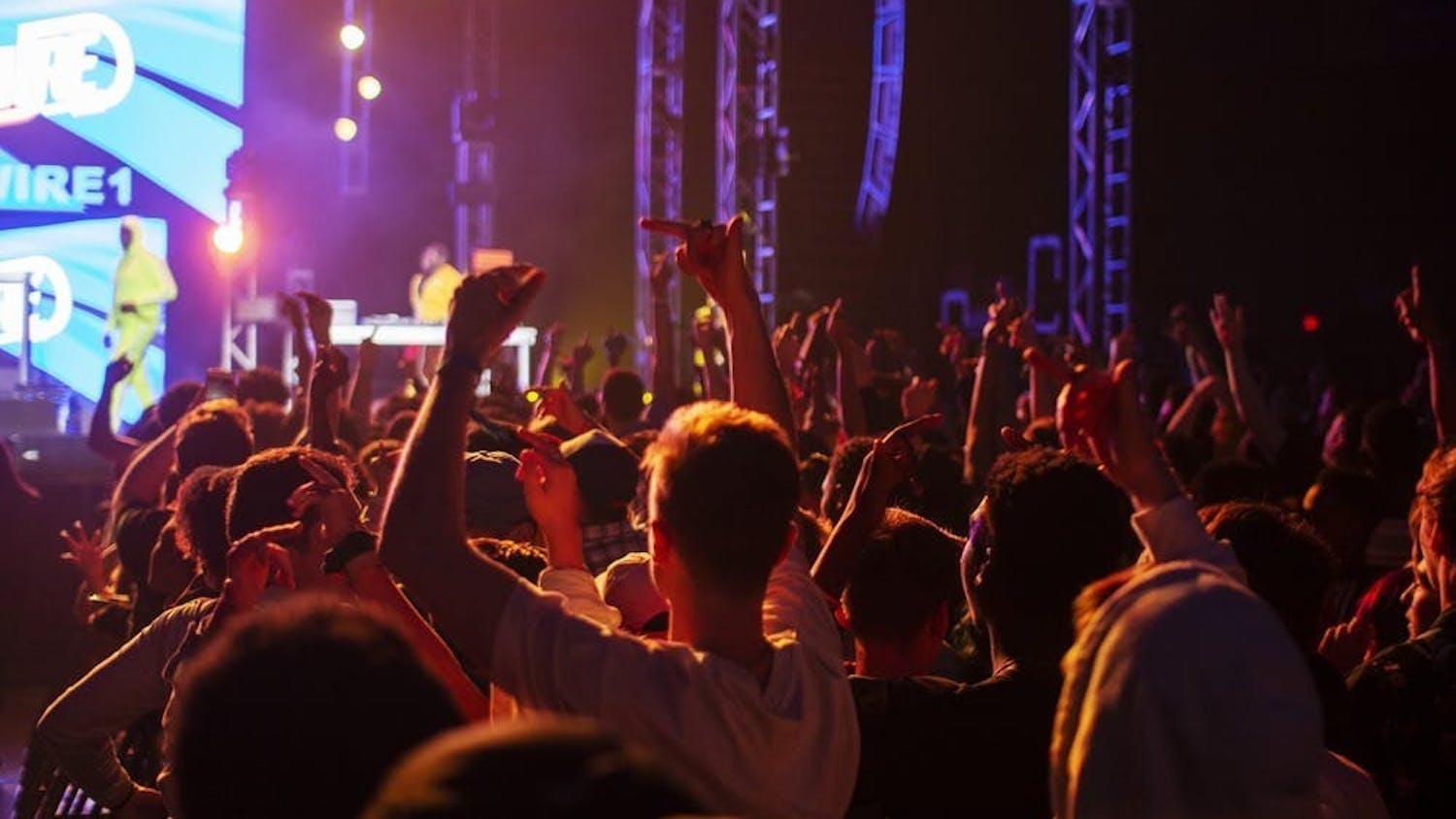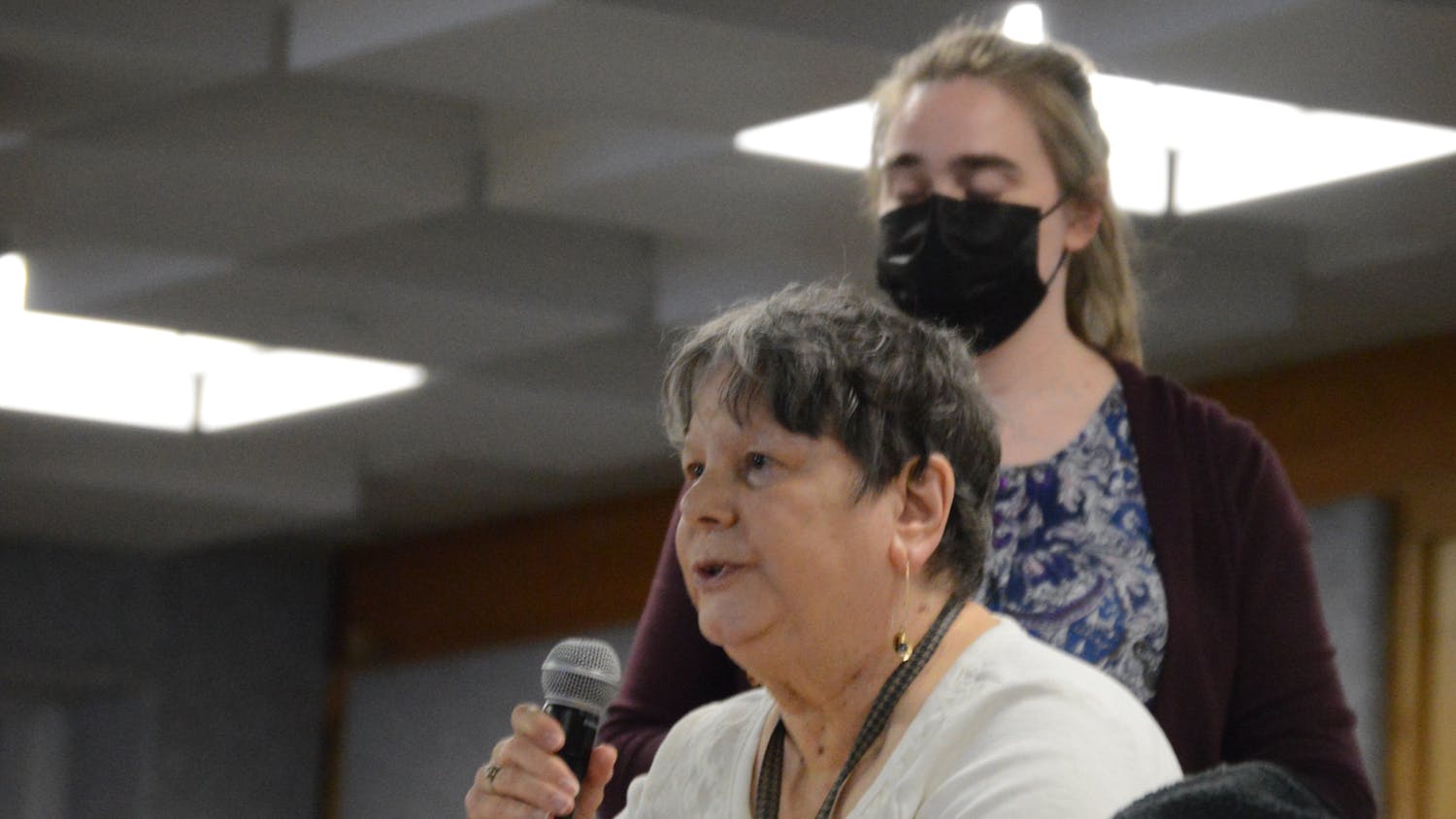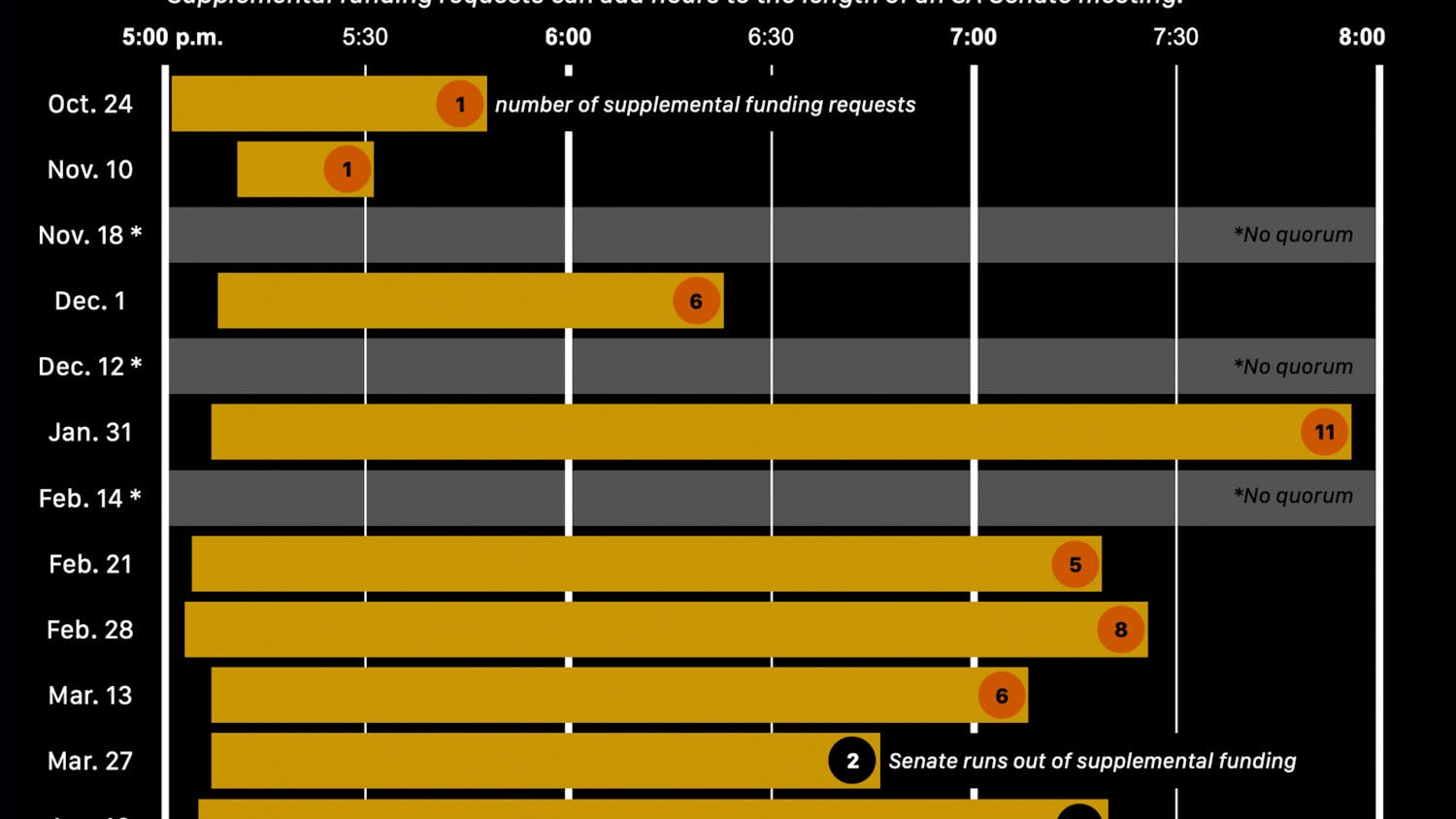For many students and faculty at UB, coming to campus poses a daily threat, not to their health but to their automobiles.
On any given weekday, the school's 14,000 parking spaces are filled two-and-a-half times between 7 a.m. and 8 p.m., putting nearly 35,000 cars on the school's roads and lots. The old saying "accidents are bound to happen" holds especially true in such a high-traffic environment.
According to University Police, there were 95 automotive accidents reported in 2000. This year, police have recorded 61.
Although the numbers may seem small for such a large campus, they represent only those accidents reported to police. Both students and police noted that offenders often opt to drive away without reporting the incident or leaving a note on the damaged car.
"It's hopeless out there," sighed Russ Carere, a lecturer in UB's music department and artist-in-residence with the Amherst Saxophone Quartet. "People are driving around corners too fast." Carere elaborated on someone he knew who did happen to "ding a car."
"She was leaving and three cars were trying for her spot. She got nervous pulling out and hit a parked vehicle when she was rounding the corner," said Carere. "Her car probably got the worst of it, but she couldn't even go back and leave a note because of the commotion in that area of the parking lot."
"There's times to drive fast and times not to drive fast. Driving in parking lots is not a time to drive fast," said Rick Winters, an admitted "compulsive speeder" and sophomore music history major.
John Grela, director of University Police, attributes the majority of accidents to drivers' inattention, rather than the setup of UB's roads and parking lots. The lots, he said, are standard for a college campus; each parking space conforms to the recommended size.
"All students, faculty, and staff should slow down. People travel too fast in parking lots and back out of parking spaces too quickly," said Grela. "If people planned their day better and got here 45 minutes earlier, there would not be such a need to rush."
Students tended to agree with Grela.
Sara Groden, a senior in political science, has been on the receiving end of several accidents since attending UB.
"I've been bumped at least three times," said Groden. "The parking lot situation is bad. People do not use caution when speeding through the aisles."
Some students have expressed concern over problematic intersections, which one student said leave drivers fighting traffic to get to class and possibly causing more accidents.
"There should be a traffic signal at Flint and Auspurger because of the heavy traffic there during the morning rush hour and the evening rush hour," suggested music performance major Colleen Luckman.
The idea is often suggested to University Police, but possibly overvalued as a major cause of accidents, said Grela.
"Coincidentally, we haven't had many accidents there," said Grela. He did acknowledge growth of traffic volume since last year, however, and added that traffic counting devices for that area will be installed.
The devices will gauge the amount of people traveling through the intersection and at what times of the day it is busiest, to determine whether a traffic light is necessary.
Grela also mentioned the possible construction of bus shelters for the UB Stadium lot, for students who park and ride busses from that location.




